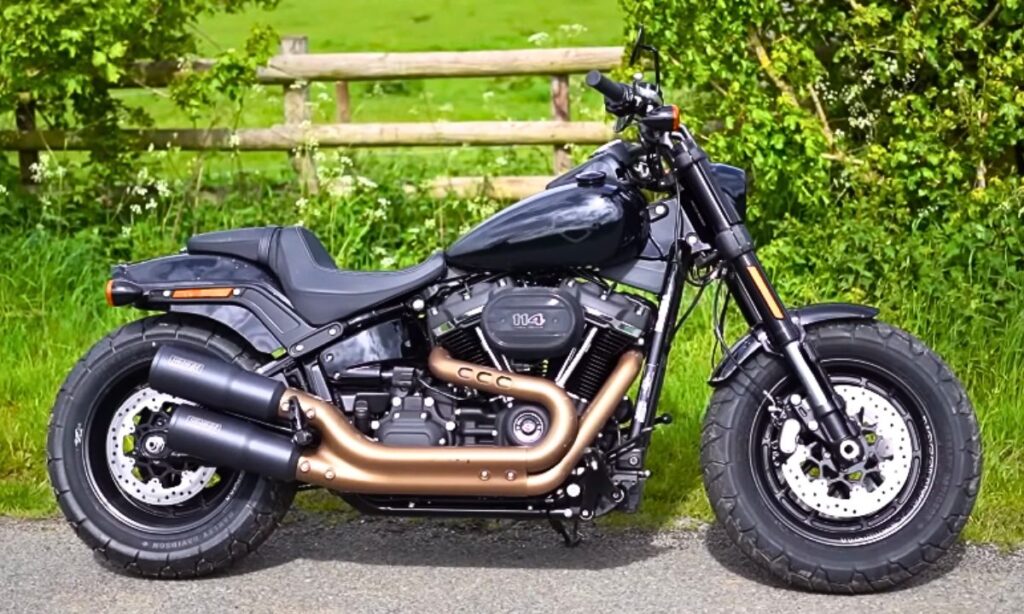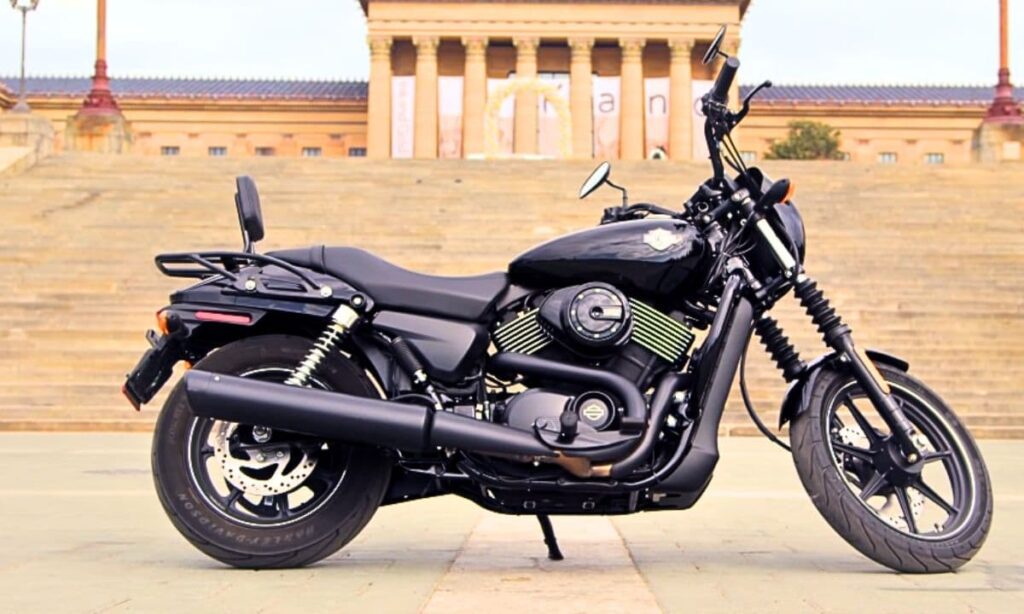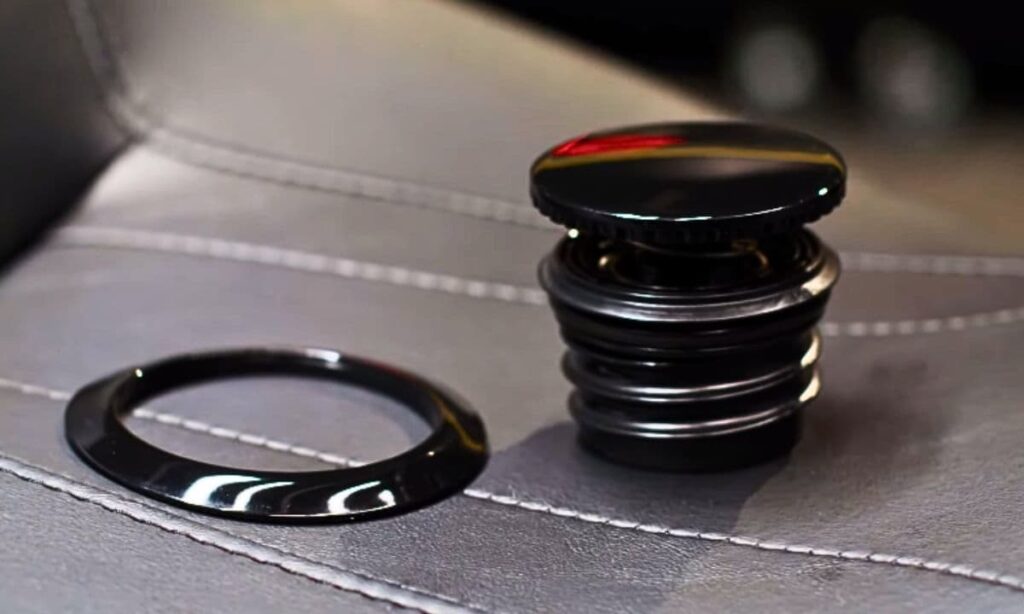The Harley Fat Bob is widely known for its robust performance and distinctive style.
However, like any mechanical device, it occasionally encounters issues that owners and potential buyers should be aware of.
In this article, we will dive into some of the common problems associated with the Harley Fat Bob and provide possible solutions for them.
Harley Fat Bob Problems
Common problems faced by owners include an overly rich fuel mixture leading to poor mileage and an engine that tends to overheat.
However, issues have been reported with the gearbox, with some users experiencing difficulty in shifting gears smoothly.
Lastly, a notable number of riders have indicated that the stock seat is uncomfortable, particularly on longer rides.

1. Stock Seat
The stock seat, while visually pleasing and consistent with the overall design of the bike, may not provide the level of comfort desired for long rides.
For those planning an extended trip or frequently commuting on their Fat Bob, the stock seat can lead to discomfort and fatigue over time.
Modifying or replacing the stock seat can be a viable solution. Numerous aftermarket seats that offer improved padding lumbar support are available.
While choosing a new seat, it’s important to consider the type of riding you do most often. A seat perfect for long-distance touring may not be the best fit for primarily city commuting.
Brands like Mustang and Saddlemen are known for their high-quality, comfortable Harley seats.
When it comes to installation, some seats can be a direct swap with the stock seat, requiring only a few minutes and basic tools.
Others may need a bit more work for a proper fit. Always check the product description and reviews for guidance on installation.
With the right seat, you’ll be able to enjoy your ride fullest, regardless of the distance you intend to travel.
2. Overweight
This hefty cruiser, tipping the scales at around 676 pounds (306 kg), can be unwieldy for inexperienced riders, particularly at low speeds and during manoeuvring.
The heavy weight contributes to a few issues, such as wear and tear on the tires and increased fuel consumption.
Riders may find themselves replacing tires more frequently due to the extra weight the tires have to support.
Similarly, the Fat Bob’s fuel efficiency can be affected, requiring more gas to move the bulk of the bike.
However, the weight of the Fat Bob is also responsible for its stability at higher speeds and its overall grounded feeling, which many riders appreciate.
Therefore, it’s crucial to approach this heavyweight motorcycle by understanding both its strengths and limitations.
3. Minimum Ground Clearance
The Fat Bob, despite its many sterling features, has a known issue regarding minimum ground clearance.
With a measurement of merely 4.9 inches (124.46mm), navigating over speed bumps or rough terrain may pose a challenge.
This drawback limits the bike’s versatility, particularly for riders fond of off-road adventures or living in areas with less-than-perfect road conditions.
To manage this low ground clearance issue, one possible method could be to modify the suspension to raise the bike’s height.
However, such adjustments have trade-offs and could impact the bike’s handling or stability, especially at higher speeds.
Always consult a professional before making any significant changes to your bike’s suspension system.
Another simpler and safer solution is to approach potential clearance issues like speed bumps or uneven terrains at an angle rather than head-on.
This technique can often help avoid scraping the underside of your bike.
4. Overheating
One common problem encountered by riders is overheating, particularly during peak summer months or in heavy traffic conditions.
Overheating can lead to several issues, such as engine damage, reduced performance, and uncomfortable riding conditions.
The primary reason behind overheating is the air cooling system used in Harley motorcycles.
Unlike liquid-cooled engines, which use coolants to manage engine temperatures, air-cooled engines rely on air flowing over the engine to dissipate heat.
In stagnant traffic or during slow rides, there isn’t sufficient airflow, leading to overheating.
To counter this issue, ensure regular maintenance of your motorcycle. Keeping the engine clean of dirt and grime helps in efficient heat dissipation.
Using synthetic oils can also improve the performance of your engine in high-temperature conditions.
Installing a heat management system or an oil cooler is another effective solution.
Remember, prevention is always better than cure. Regularly monitor your engine temperature during rides, especially in hot weather or heavy traffic.
5. Lack of Tech Available
One of the primary issues that riders often encounter with the Fat Bob is the lack of modern technology features.
Unlike some of its competitors in the market, it has been slower to integrate advanced technology into its design.
For instance, the motorcycle does not come with a standard GPS navigation system or advanced infotainment features, which modern riders have come to expect.
However, another common tech-related drawback is its absence of a digital dashboard.
Most modern motorcycles have shifted to digital dashboards, providing riders with a clear and comprehensive view of essential information.
However, the traditional analogue gauges on the Fat Bob can be seen as a setback, especially for tech-savvy riders.
The absence of advanced safety technology, such as traction control and cornering ABS, is also a downside.
These features have become standard on many high-end and even mid-range motorcycles but are not available on the Fat Bob.
This lack of safety technology could be a deal-breaker for potential riders who prioritize safety features in their ride.
6. Unusual Noise
This issue can stem from a variety of sources and may indicate a range of potential problems, from minor to serious.
These noises can come in the form of a ticking, knocking, or pinging sound. A ticking sound often indicates an issue with the valve train.
The valve train is responsible for the opening and closing of the intake and exhaust valves.
A lack of proper lubrication or a misadjusted valve can lead to a ticking noise. Regular maintenance and periodic valve adjustments can mitigate this issue.
A knocking sound, on the other hand, is often associated with the engine. It could be due to low-quality fuel, worn-out piston rings, or even a serious issue like rod knock.
If you hear a knocking sound, it is advisable to have your bike checked by a professional mechanic.
Lastly, a pinging sound typically signifies pre-ignition. This is caused when the air-fuel mixture in an engine’s cylinder ignites too early.
High-quality fuel and ensuring your spark plugs are in good condition can help prevent this.
7. Small Tank
The Fat Bob’s fuel tank holds just 3.6 gallons, which falls short when compared to other bikes in its category.
This can be an inconvenience for riders who prefer long, uninterrupted journeys, as it necessitates frequent fuel stops.
To manage this issue, you must pay close attention to your fuel gauge and plan your route with fuel availability in mind.
Upgrading to a larger, aftermarket tank is also an option, but this process can be quite involved.
It requires disassembly and reassembly of parts and potentially re routing of cables and hoses.
However, it’s important to consider the aesthetic changes a larger tank would bring to the overall look of the bike.
8. Higher Services Cost
One of the potential challenges that Fat Bob owners may encounter is the relatively higher cost of services.
This is largely due to the premium nature of the brand and the specialized care that these motorcycles require.
Harley-Davidson has a reputation for high-quality parts, intricate details, and top-notch performance, all of which contribute to the increased cost.
When seeking services for your Harley Fat Bob, it’s important to consider regular maintenance needs such as oil changes, brake checks, and tire rotations.
Harley-Davidson recommends that oil changes and overall inspections should be performed every 5,000 miles or earlier based on your riding habits.
Brake fluid should be replaced every two years, while tires and brake pads should be checked regularly for wear and replaced if needed.
Harley Fat Bob User Reviews:
By Bob Backer 114
“It is a 3/5 bike; the extra star comes from the sense of occasion you get every time you fire it up to go for a ride. Best short description? It’s alright (in a nice way). It seems reliable, many of the niggles mentioned elsewhere in these reviews are a ten minute fix, BUT, you shouldn’t have to on a bike at this price. Best feature? They hold their value. Worst features? Shoddy designs and last minute build quality. A gaping hole under the seat to spray road muck all over the electrics and rear suspension? Check. A battery that needs a hundred piece toolkit and an engineering degree to change? Check. Happy with my purchase once I sorted the glitches out and it is a lot of fun, but my over 20 year old Jap Hypersports Tourer was leagues ahead of the Harley 20 years ago. As a functional bike.”
By BOB 2
“Great bike, been looking for something else to replace it, but can’t find anything else which is as comfortable, can be loaded with camping/touring gear, has grunt, and doesn’t require me to carry out major building work to garage it (Rocket III), so given up looking. 23000 miles in just over 5 years, used at least 10 months of each year I’ve owned it from new.” Source: motorcyclenews.com

Tonmoy, the brains behind the influential motorcycle-focused website, TwoWheller.com, is a dedicated and passionate advocate for biking culture. Born and raised in a family of motorcycle enthusiasts, his love for two-wheeled transportation was ignited at an early age. His commitment to providing in-depth reviews and helpful tips for riders has established him as a respected figure in the motorcycle community.

